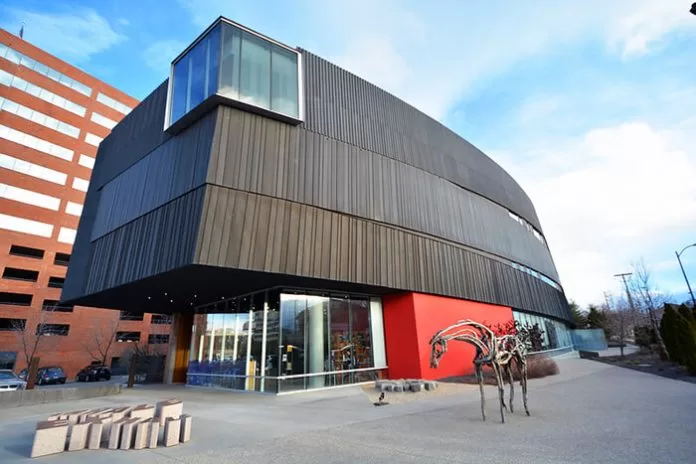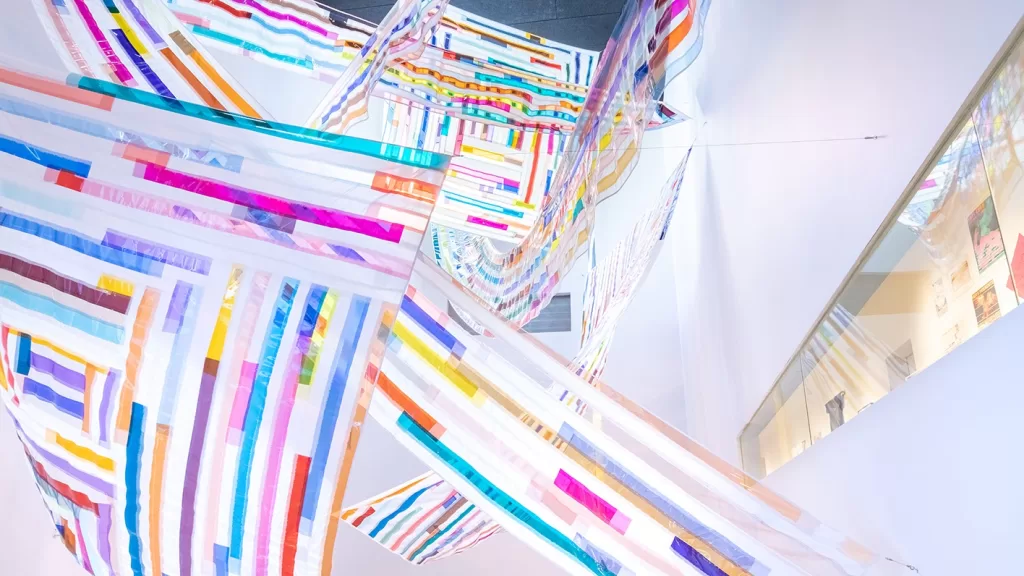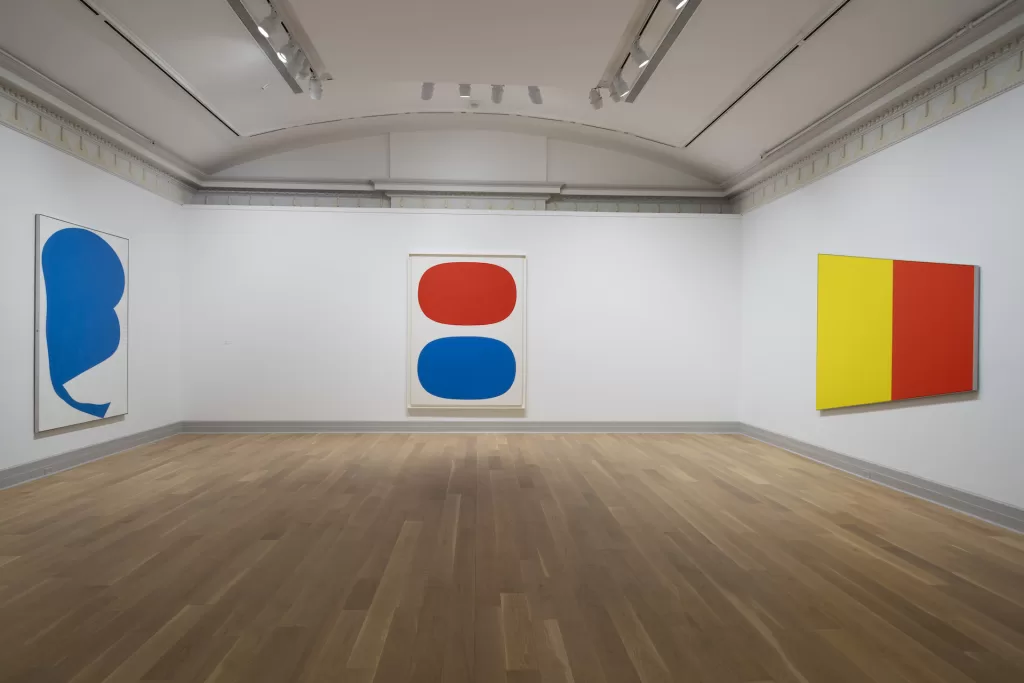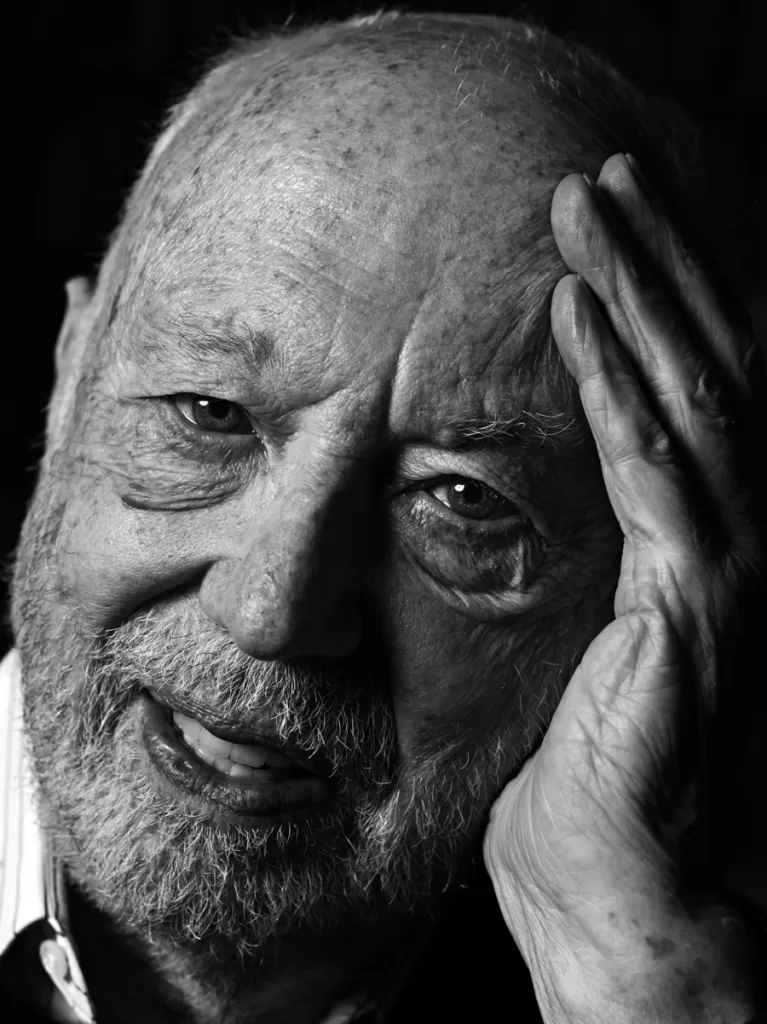
Fieldtrips are always fun, even for adults. Yesterday was the perfect time to beat the heat and head 30 miles to the west to see something wonderful. Art museums are a great place to get lost in thoughts. Even though there were small displays in a very large building, Angel of the Aluminum Cloud and I walked away with lots to think about.
The clever sculpture of the mustang in the picture above was made of desert wood found in the surrounding hills where they live. Thinking about the fight that continues about the future of the mustangs, it seemed fitting the image was made of something quite dead. Although the statue had form, you could see through it to the other side. Almost like they were vanishing, which they are. Their days on the plains of Northwestern Nevada are limited. Horses and high density housing don’t mix. Sadly, the horses will lose every time.

Entering the museum, these colorful quilts, made of light and transparent strips of cloth, took the eye upward through the four floors of the museum. This was, itself, an art exhibit by a very talented seamstress. A perfect exhibit for summer days on the high desert plains. The exhibit gave life to an otherwise cold and sterile environment.
We had chosen this field trip after I recently learned of a fascinating combat troop of World War II. Known as the US Army’s 23rd Headquarters Special Troops, or Ghost Army, they used deception to fool Adolf Hitler’s forces.

According to Museum information:
“Ghost Army: The Combat Con Artists of World War II relates the unique story of more than 1,100 men who deceived, sketched, and painted across Europe to manipulate Hitler’s armies during World War II.
Activated on January 20, 1944, the 23rd Headquarters Special Troops, known as the “Ghost Army,” was the first mobile, multimedia, tactical deception unit in US Army history. Consisting of an authorized strength of 82 officers and 1,023 men under the command of Army veteran Colonel Harry L. Reeder, this unique and top-secret unit was capable of simulating two whole divisions—approximately 30,000 men—and used visual, sonic, and radio deception to fool German forces during World War II’s final year.
The unit consisted of a carefully selected group of artists, engineers, professional soldiers, and draftees, including famed artists such as fashion designer Bill Blass, painter Ellsworth Kelly, and photographer Art Kane. The unit waged war with inflatable tanks and vehicles, fake radio traffic, sound effects, and even phony generals, using imagination and illusion to trick the enemy while saving thousands of lives along the way. Armed with nothing heavier than .50 caliber machine guns, the 23rd took part in 22 large-scale deceptions in Europe from Normandy to the Rhine River, the bulk of the unit arriving in England in May 1944, shortly before D-Day. The 23rd, along with the 3133rd Signal Service Company in Italy, helped liberate Europe from the grip of Nazi tyranny.
Produced by the National World War II Museum in New Orleans, this exhibition brings together archival photography, historical artifacts, uniforms, sketches, and life-sized recreations of inflatable military equipment used during combat.”
This mission was kept Top Secret for decades just in case it was ever needed again.

When I first read about this, it brought a huge smile to my face. Consider this. Bill Blass starting his career designing high fashion while sitting in fox holes fooling the Germans! The life size planes, tanks, and artillery were made of rubber. Only one full size tank made it out and is on display in at the World War II Museum in New Orleans. Everything else was burned when the missions were completed.
This group of a very few soldiers fooled the enemy with sounds recorded on wire. Regular recording tape hadn’t been invented yet. In a lab, different sounds were combined to make tracks of river crossings, tank movements, vehicle caravans, and soldiers moving along on their way. They were blasted throughout the night, giving the other side something to think about. Yikes. 30,000 Americans were moving in. It worked time and time again.
There are several great documentaries on this wonderful group. Search “The History Channel” and you can find out more.
Of course, as is the case in any museum, some rooms held me for longer than others. The original watercolors and pencil drawings of the Ghost Army Soldiers were so raw, you could almost hear bombs exploding in the background. Other’s, like the minimalist work of Ellsworth Kelly just made me shake my head, wishing I’d thought of it first.



These brave artists, although never in direct combat, saved thousands of American lives with their talents. The art they left behind remains a silent testament to wartime. Lovely in the saddest of ways.
I’ll remain our day for a long time to come. Museums provides personal experiences for each visitor. Artificial Intelligence will never be able to replace a museum experience. The actual uniforms adorned with medals behind the protection of glass cases are REAL. REAL wins every single time. I hope future generations protect our precious artifacts of times long ago.
Whatever you do today, think about visiting a museum in your area. See if there are new exhibits that might be of interest. Plan to stay awhile. Do lunch. Take a friend. If you’re lucky, your adventure might let you visit another time and place long ago. Priceless.
More tomorrow.
